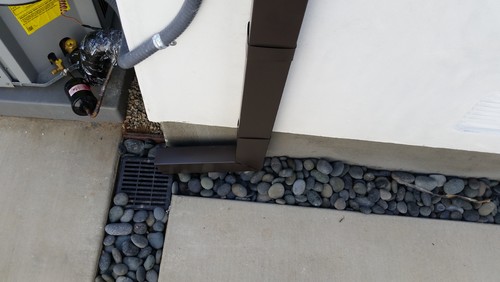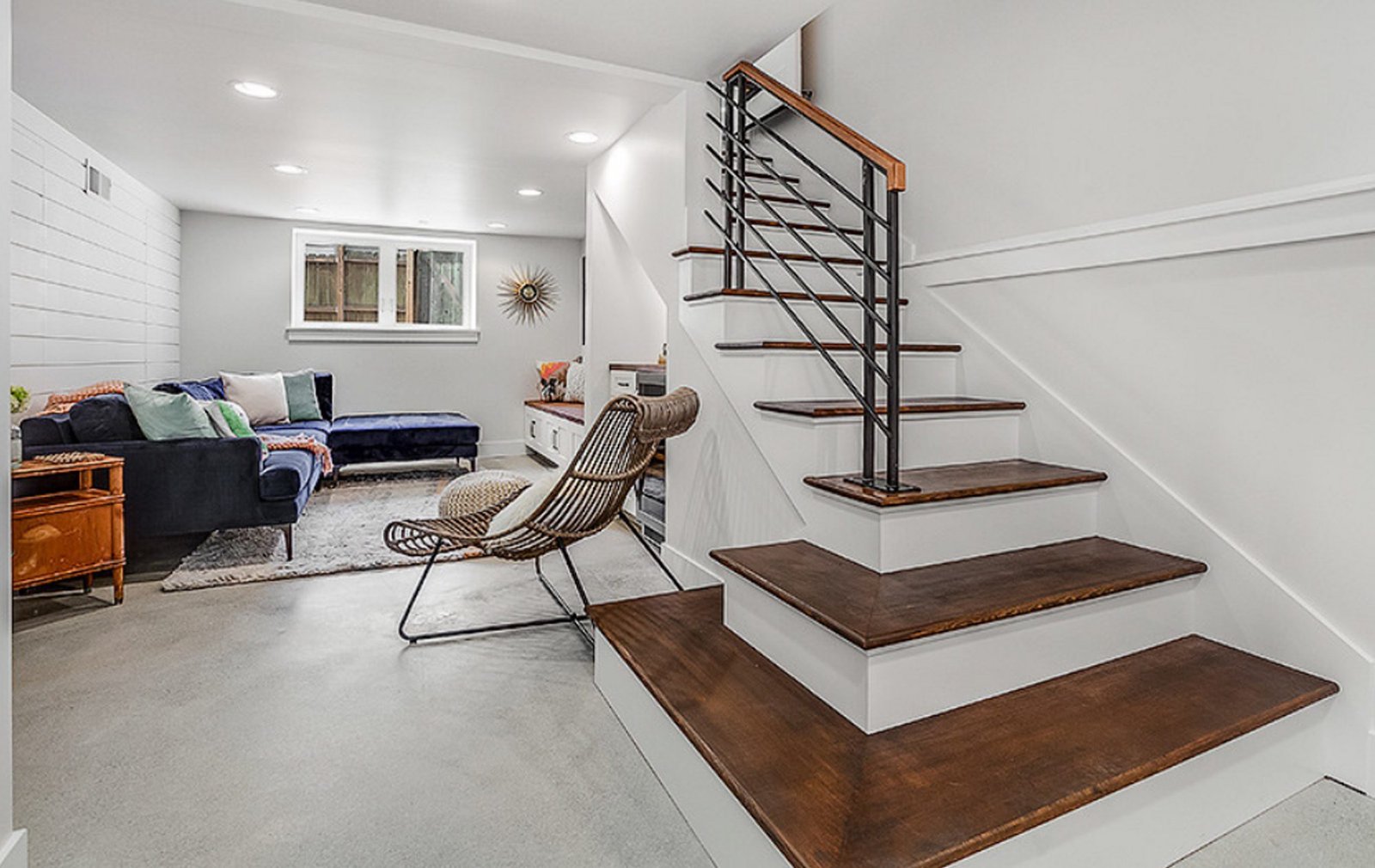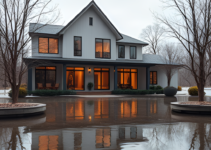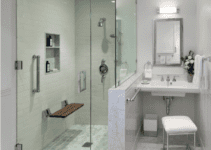A well designed water collection system, through set of Gutters and Drain Pipes at eave-end, not only protects property and building but also helps in water harvesting. Among the most common reasons for moist basements and crawl spaces is an inadequate gutter, downspout, and drain system. Gutters are required at all locations where water drains off the roof. Gutters and drains need to be adequate in size and quantity to handle all but the heaviest of torrential downpours. Drainage of water from the roof is extremely important in order to achieve complete weather-proofing of the building.

Photo by A Plus Gutter Systems – More exterior home ideas
Downspouts or leaders are critical in dispersing water away from the house.
The purpose of the entire system is to divert the water collected on the roof away from the house and its foundation. The diverted water may be drained into a storm sewer or an on-side “French drain” or a similar system.
Different Types of Rain Gutters:
Most gutters come in several sizes and shapes called profiles. These include U shapes as well as K configurations, in which the ogee-shaped front looks like the letter K.
1. Wood Gutters and Galvanized Downspouts:
Wooden gutters are a beautiful part of any home or business. Once only found on historical homes or buildings, they are now being made and used by those who appreciate them.
The original wood gutters were made from old growth cedar, a product which is rarely available today. Its substitution with new growth cedar or hemlock gutters has proven inadequate. Galvanized downspouts do not tend to last as long the newer products available on the market.
- Advantages: They are decorative and add character to any home.
Disadvantages: They are expensive. The maintenance involved can be time consuming and costly but keeping your gutters protected, not only adds to the life of the gutter, it also allows them to work properly.
2. Continuous Aluminum Gutters and Downspouts (the typical rain gutter system):
Most residential gutters come in two sizes-5″ and 6″–and are made of either aluminum, galvanized or copper metal in a standard “K” style. The typical 5 inch K-style gutter comes with 2 inch x 3 inch downspouts.
It is easily installed by the homeowner, and when properly installed is a good product.
The most popular residential gutter type is seamless aluminum also known as formed, Ogee, or OG. Seamless gutters have the color of your choice bonded to the metal when the metal is made.
The metal comes on a long roll and it’s formed into the shape and length you need, at the job site.
Advantages: This system can be easy installed. You’re saving money because you don’t have to paint the gutters.
Disadvantages: It is susceptible to damage by heavy ladders, as well as long-term deterioration by ultraviolet light from the sun.
Advantages and Disadvantages of Slate Roofs (howtobuildahouseblog.com)
3. Copper and Steel Gutters:
Copper is usually reserved for classic renovations.
Advantages: It has a good look, never rust and never needs painting. It also adds value to your home and requires less maintenance than aluminum or other materials.
Disadvantages: It is very expensive. Copper gutters can oxidize and turn green over time unless they are treated.
Steel gutters are strong and if they can last long time if they are well maintained. Stainless-steel gutters are strong and rust-free, and maintain their high sheen for years.
Advantages: Steel gutters can stand up to ladders and fallen branches better than aluminum.
Disadvantages: Galvanized steel eventually rusts through and need to be painted, inside and out. Stainless steel is expensive.
4. Vinyl and Plastic Gutters and Downspouts:
This is the most commonly used material. It is easily installed by the homeowner, and when properly installed is a good product.
Advantages: Easy installation and not expensive. Quality vinyl gutters retain their color; remain flexible; are relatively easy to repair or replace; don’t rust or corrode; have a greater dent resistance than lightweight aluminum and can be painted, if desired.
Disadvantages: It can be susceptible to damage by heavy ladders, as well as long-term deterioration by ultraviolet light from the sun.
5. Integral Gutters:
This system is formed by the end of the rafters and fascia in a sloped roof. The gutter is lined with a built-up roofing material and has the advantage of being able to hold more water than most of the other types of gutters. It was a popular gutter style in the 1960’s.
Advantages: They are able to hold more water than other types.
- Disadvantages: The potential for leaks, which can result in damage to the framing, fascia, soffit, and sheathing of the roof. It needs to be inspected every few years and the lining replaced every five years.
6. Splash Blocks:
Box gutters can be found on older homes, multi-family dwellings, old stores, factories, etc. They were by and large one of the most popular rain collection devices built into and onto structures built between 1880 and 1925. A box gutter does not hang onto the edge of a roof or on the edge or side of a house as many modern pre-formed gutters do. A box gutter is actually built into the bottom of the roof or into the roof overhang.
- Advantages: They are simple and inexpensive to install.
Disadvantages: They need to be installed in an area with proper drainage and require ongoing maintenance for maximum effectiveness.
7. Fascia Gutter:
A fascia gutter is a rain ware system that is fixed to a fascia board. It is often a custom made rainwater gutter that is fixed to the ends of the rafters and also performs the function of a fascia board. It is most commonly found in the Western part of the United States.


